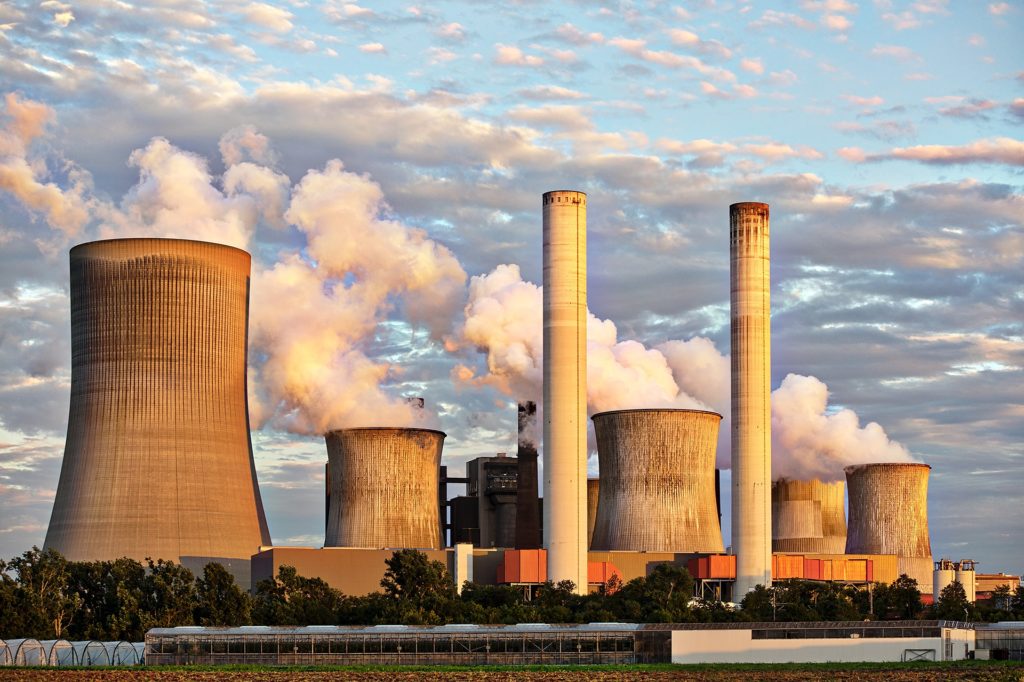The Clean Power Plan Replacement Comes With a Major Change to NSR (Part 1)
Important pre-construction environmental review for power plant modifications at risk
Last month, I discussed a proposal before the House Energy and Commerce Subcommittee on Environment to amend the Clean Air Act to weaken pre-construction review for modifications to equipment at large stationary sources. Since then, the Subcommittee voted H.R. 3128 out on a party line vote, and it’s currently waiting for the full House Energy & Commerce Committee to take it up. Now, EPA has baked a very similar proposal into their Clean Power Plan replacement. This post borrows from my previous coverage to explain why this change matters, and provides additional context including EPA’s own analysis released today. In a forthcoming post, I’ll explore the specific legal questions raised by EPA’s proposal to amend its interpretation of the Clean Air Act.
New Source Review (NSR) is the pre-construction review permitting program for air pollution from large stationary sources like power plants and petroleum refineries. New major sources of air pollution and existing sources making major modifications are required to submit applications to the relevant regulatory agency (usually a state or local agency – here in Los Angeles, it’s the South Coast AQMD) before starting construction. The regulatory agency then reviews those applications and issues permits-to-construct requiring state-of-the-art air pollution controls to ensure that any potential increases in air pollution are mitigated to the maximum extent possible. The process on the ground is of course a bit more complicated, and differs depending on whether the area where the source is located is in attainment with the National Ambient Air Quality Standards (NAAQS) for the pollutant(s) being emitted. But it’s not necessary to dive that deep into the weeds to understand why the proposed changes to NSR matter.
The House proposal would amend the Clean Air Act such that only those changes that increase the hourly rate of emissions from the source would be considered “modifications” subject to NSR. EPA is proposing to amend its regulations to allow states the option of considering hourly rates when evaluating modifications to power plants (known as electricity generating units, “EGUs”). These proposals contrast with the Clean Air Act’s current definition of modification, which covers “any physical change in, or change in the method of operation of, a stationary source which increases the amount of any air pollutant emitted by such source or which results in the emission of any air pollutant not previously emitted,” which EPA has interpreted in its regulations to mean any increase in actual annual emissions.
The potential changes are significant because they create a giant loophole for industry: sources can increase the hours of operation for existing sources (and thus the actual cumulative pollution emitted from the source) without undergoing NSR review — so long as the hourly average remains the same. This might seem like a minor change, but it has substantial implications due to one of the biggest weaknesses of the NSR program: its grandfathering problem.
Congress generally exempted existing stationary sources from meeting new standards under the Clean Air Act, assuming that pollution controls would gradually be phased in as old equipment was upgraded under a modification triggering NSR, or retired and replaced with new equipment subject to NSR. However, contrary to Congressional expectation, refineries and power plants have hung on to grandfathered equipment far beyond their expected lifetimes, indefinitely postponing modifications and upgrades in order to avoid being required to install expensive air pollution control equipment under NSR. The EPA has been trying to deal with this problem for decades, issuing an Enforcement Alert in 1999 that the agency believed regulated industries were misleading regulators to get out of NSR. (The EPA was, of course, correct — virtually all major US refiners would enter global consent decrees over the next decade accepting some applicability of “new source” standards to old equipment as a result of Clean Air Act violations.)
The NSR modification provisions are one of the very few openings to regulate emissions from grandfathered equipment, ensuring that at the very least existing equipment can’t increase emissions without undergoing regulatory review. Now, EPA and the House GOP are proposing to significantly weaken even that regulatory hook by giving these grandfathered sources a window to increase emissions without any kind of environmental review.
EPA argues that changes to NSR are an integral part of their Clean Power Plan replacement in order to allow EGUs to update their equipment and meet inside-the-fenceline energy efficiency improvements deemed the Best System of Emission Reductions (BSER). (See Megan Herzog’s excellent compiled resources for explanations of BSER and the Clean Power Plan). But this ignores the grandfathering history described above. EPA admits that its Clean Power Plan replacement is likely to result in emission increases on an annual basis that would normally trigger NSR:
As the EGU increases its generation, to the extent the EGU operates beyond its historical levels by a meaningful amount, it could result in an increase in emissions on an annual basis, as calculated pursuant to the current NSR regulations. (Proposal at p. 109)
And the agency also admits that the majority of power plants are subject to weakened environmental standards, citing a study finding that eighty percent of coal-fired EGUs “have emissions rates for NOx and SO2 at levels that exceed those typically required under NSR” and concluding that those EGUs “would have to install additional controls for NOx or sulfur dioxide (SO2) if these [energy efficiency] projects triggered the applicability of NSR.” (Proposal at p. 112)
But instead of celebrating that these grandfathered sources might finally be subject to environmental review, EPA is seeking to allow these sources to once again escape NSR. These sources have delayed needed maintenance and upgrades for decades in order to avoid undergoing environmental review and being forced to install air pollution controls. That they might finally be forced to undergo environmental review is a net positive for public health and the environment, yet EPA describes it only as a negative:
Were such projects found to trigger major NSR permitting, the consequences would include an increase in the sources’ compliance costs and time for project implementation, enormous new permitting burdens on state permitting authorities, and increased costs to consumers. Existing plants might therefore forego investing in efficiency improvement projects, rather than risk triggering NSR by undertaking such projects. Worst case, if compelled to undertake efficiency improvement projects in order to comply with state-developed standards of performance, some existing facilities might choose to shut down altogether, in advance of the end of their expected useful life. (Fact Sheet at p. 2)
Oh no, a “worst case” scenario that involves the retirement of highly polluting equipment grandfathered from environmental regulation that’s no longer economically feasible to maintain? What a terrible outcome for public health and the environment!
Without this proposal, it’s likely these old coal-fired EGUs would continue to retire in the face of market pressures from cheaper natural gas. But this change to NSR may extend the life of equipment by allowing coal plants to upgrade without facing environmental review, forcing fenceline communities to bear the burden of increased hours of operation from highly polluting equipment spewing both toxic and conventional pollutants into their homes.
Reader Comments
One Reply to “The Clean Power Plan Replacement Comes With a Major Change to NSR (Part 1)”
Comments are closed.







Meanwhile we keep on taking down the trees that give us a very natural solution to removing pollutants and giving us clean air.